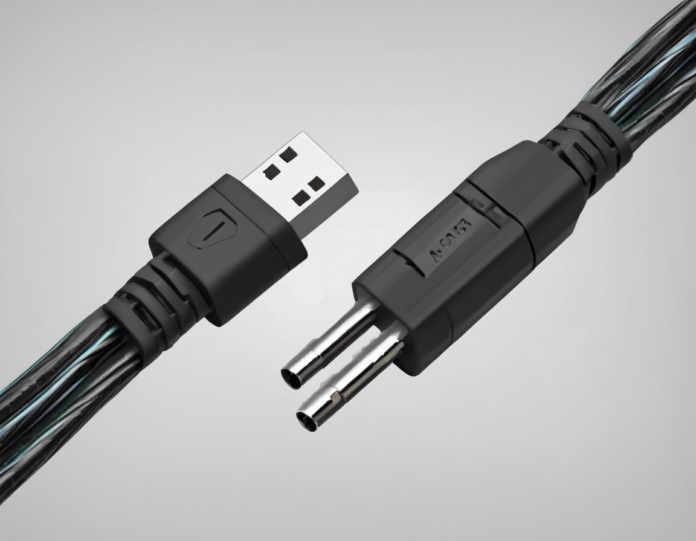Type A cables are ubiquitous in our modern world, serving as the standard connector for a wide range of devices and peripherals. From smartphones to laptops, printers to external hard drives, Type A cables play a crucial role in keeping our digital lives connected and powered. In this comprehensive guide, we will delve into the world of Type A cables, exploring their history, technical specifications, common uses, and tips for maximizing their utility.
Understanding Type A Cables
What are Type A Cables?
Type A cables are a type of USB (Universal Serial Bus) cable known for their classic rectangular shape with a flat design. These cables feature a Type A connector on one end, which is typically inserted into a device such as a computer or charger, and a different type of connector on the other end, such as Type B, micro USB, mini USB, or USB-C.
History of Type A Cables
The Type A USB connector was introduced in the mid-1990s as part of the original USB specification. Since then, it has become one of the most widely used connector types in the world, thanks to its versatility and compatibility with a vast array of devices.
Technical Specifications
Type A cables come in different versions, including USB 1.1, USB 2.0, USB 3.0, and USB 3.1. Each version offers varying data transfer speeds and power delivery capabilities, with the latest iterations being faster and more efficient than their predecessors.
Common Uses of Type A Cables
Charging Devices
One of the most common uses of Type A cables is for charging smartphones, tablets, cameras, and other electronic gadgets. These cables can deliver power from a USB port on a computer or a dedicated charger to the device, ensuring it stays powered up and ready to use.
Data Transfer
Type A cables are also used for transferring data between devices. Whether you’re syncing your smartphone with your computer, backing up files to an external hard drive, or connecting a printer to your laptop, Type A cables enable seamless data transfer.
Connecting Peripherals
Many peripherals such as keyboards, mice, printers, and external storage devices use Type A connectors to interface with computers and other devices. This versatility makes Type A cables indispensable in the world of technology.
Maximizing the Utility of Type A Cables
Quality Matters
Invest in high-quality Type A cables to ensure reliable and efficient performance. Cheaper, low-quality cables may not only deliver subpar charging and data transfer speeds but could also pose a risk of damage to your devices.
Cable Management
Keep your Type A cables organized and untangled to extend their lifespan and prevent wear and tear. Consider using cable organizers, clips, or sleeves to keep your cables neat and tidy.
Compatibility Checks
Ensure that your devices are compatible with the Type A cables you’re using. While Type A connectors are widely used, there are different versions of USB that may impact data transfer speeds and power delivery.
Proper Handling
Handle your Type A cables with care to avoid damage to the connectors and wires. Avoid bending or twisting the cables excessively, and unplug them gently by gripping the connector rather than pulling on the cable itself.
Frequently Asked Questions (FAQs)
1. Can I use a Type A cable to charge my smartphone?
Yes, Type A cables are commonly used for charging smartphones, tablets, and other devices. Ensure that the cable is rated for the appropriate power delivery to avoid slow charging or potential damage.
2. What is the difference between USB 2.0 and USB 3.0 Type A cables?
USB 3.0 Type A cables offer faster data transfer speeds compared to USB 2.0 cables. If you have devices that support USB 3.0, using the compatible cable can significantly reduce transfer times.
3. Are Type A cables compatible with USB-C devices?
While Type A cables have a Type A connector on one end, they can be used with USB-C devices by using a Type A to USB-C adapter or cable. This allows for compatibility between older and newer devices.
4. Can I extend the length of a Type A cable?
Yes, you can use Type A cable extensions to increase the length of your cable for added flexibility. Be mindful of signal degradation over longer cable lengths, especially for high-speed data transfers.
5. Are all Type A cables the same?
Not all Type A cables are created equal. Different cables may support varying data transfer speeds, power delivery capacities, and build quality. It’s essential to choose a cable that meets your specific needs and device requirements.
In conclusion, Type A cables are an essential part of our digital landscape, facilitating the connection and power delivery for a wide range of devices. Understanding their technical specifications, common uses, and best practices for maximizing their utility can help you make the most of these versatile cables in your everyday tech interactions. Whether you’re charging your smartphone, transferring files, or connecting peripherals, Type A cables remain indispensable in keeping you connected and powered up in the digital age.

